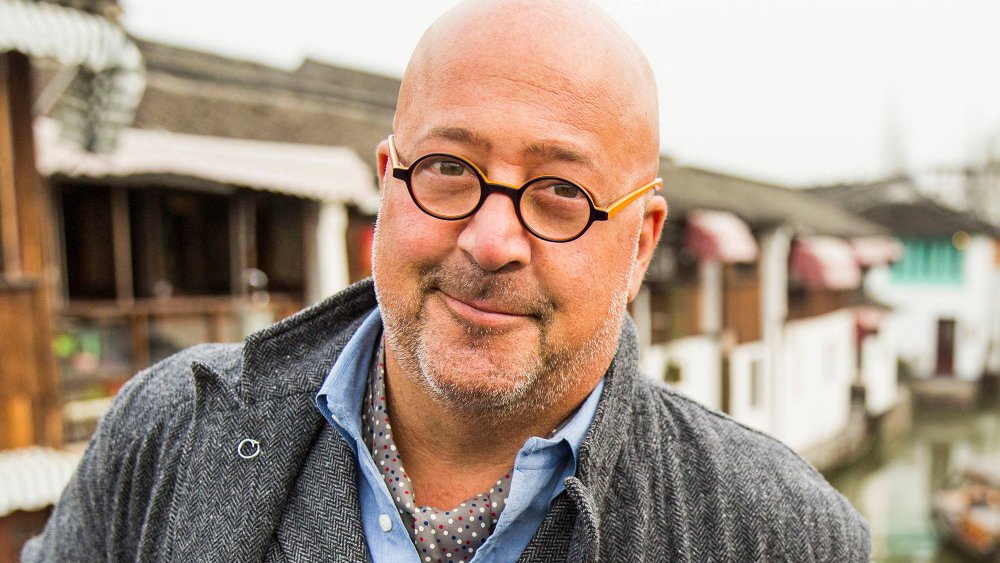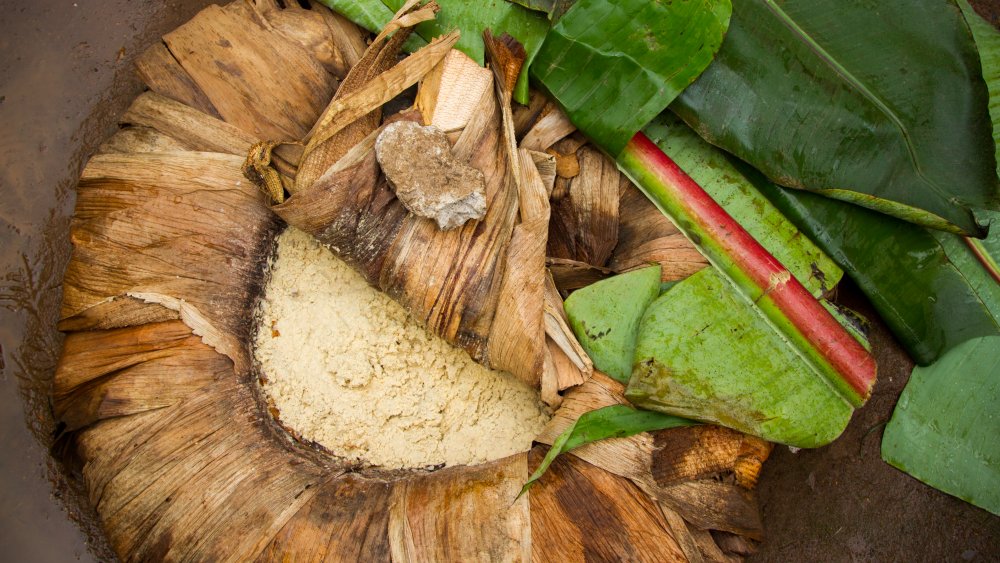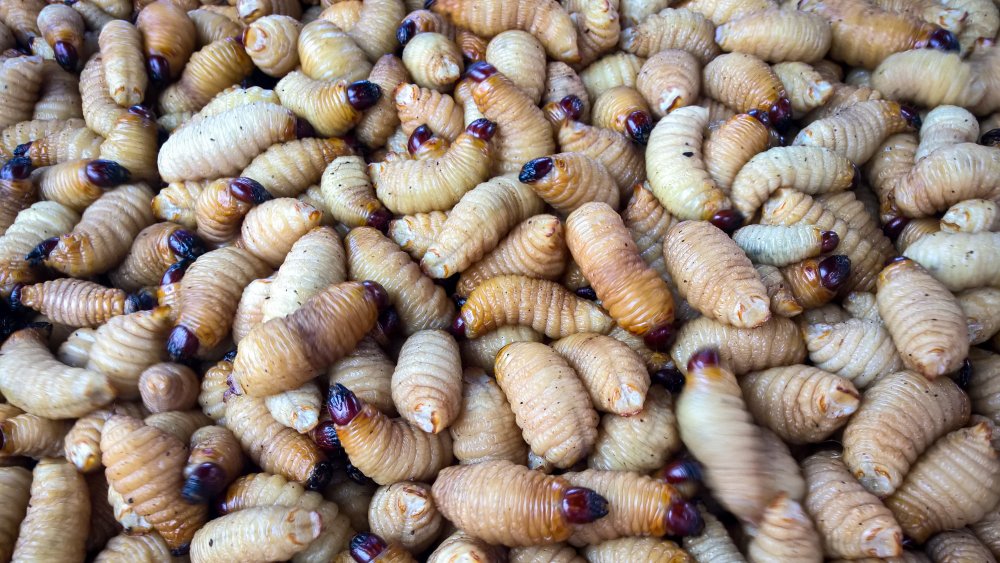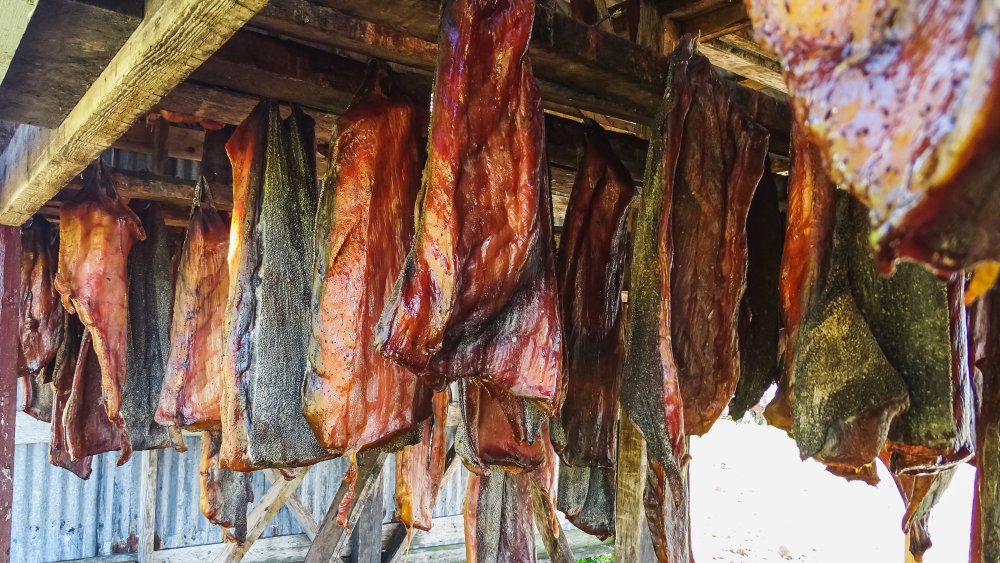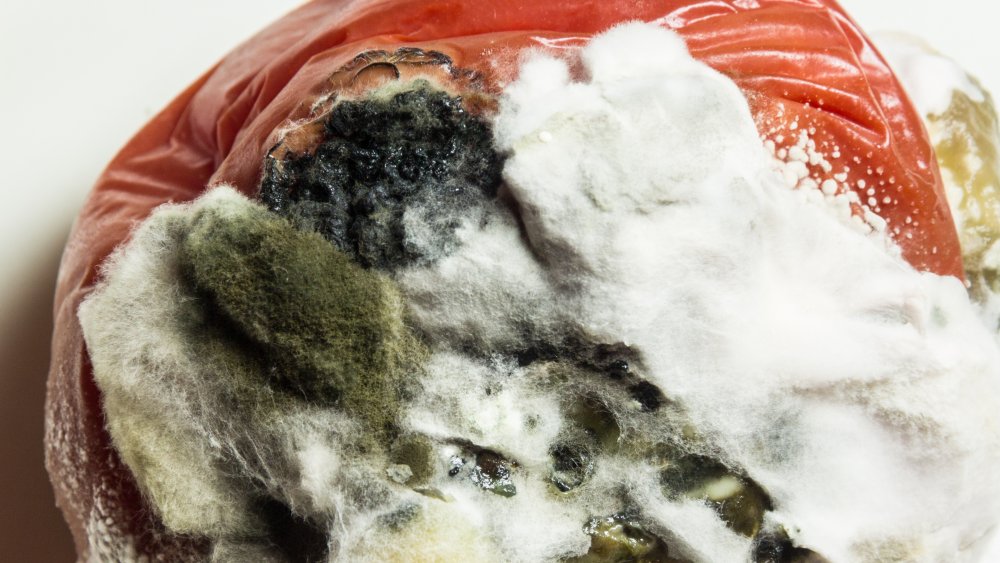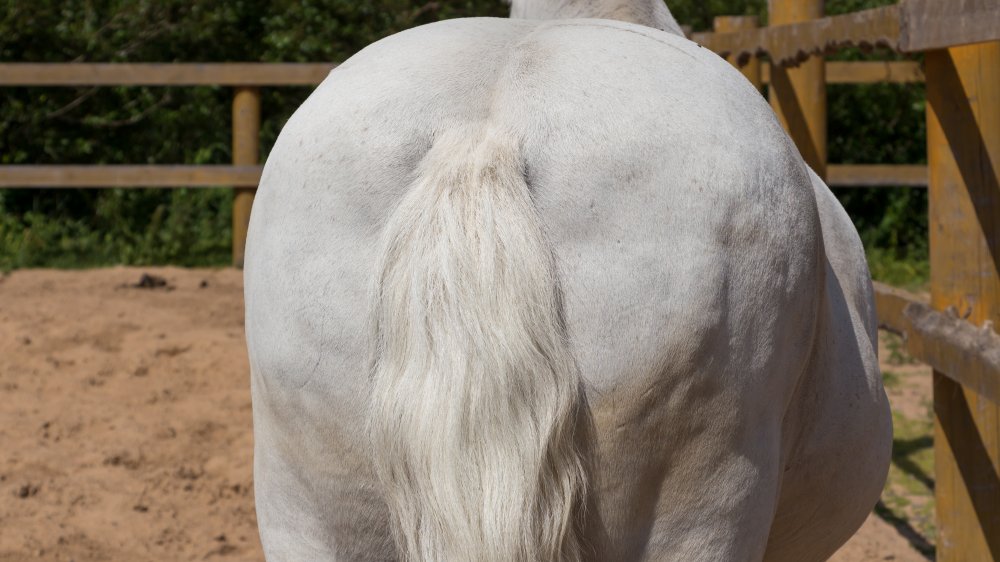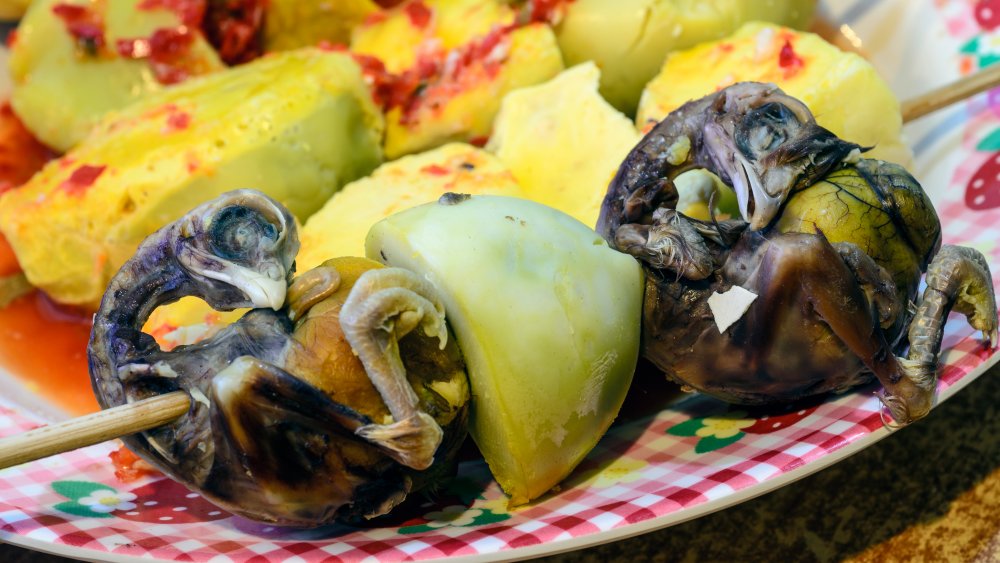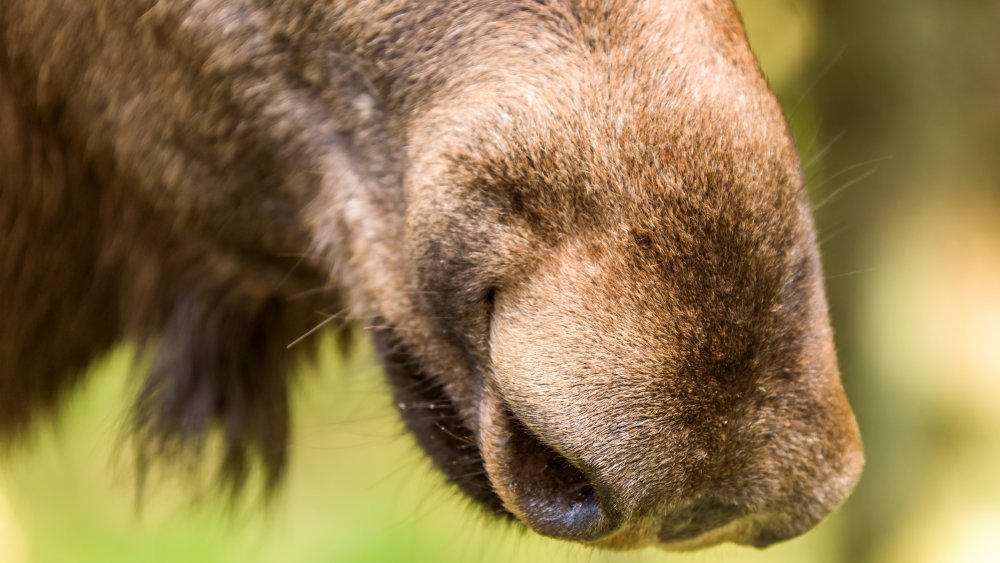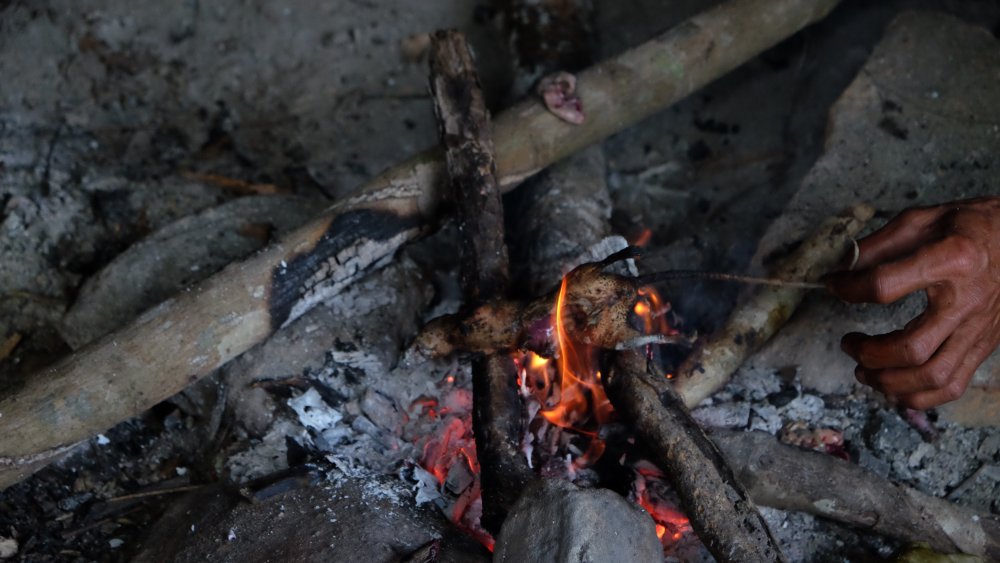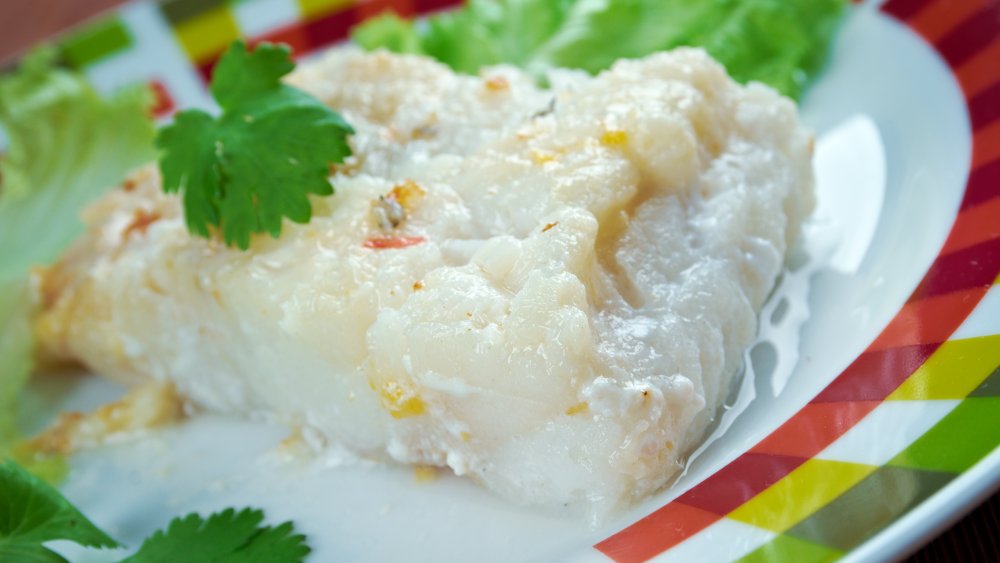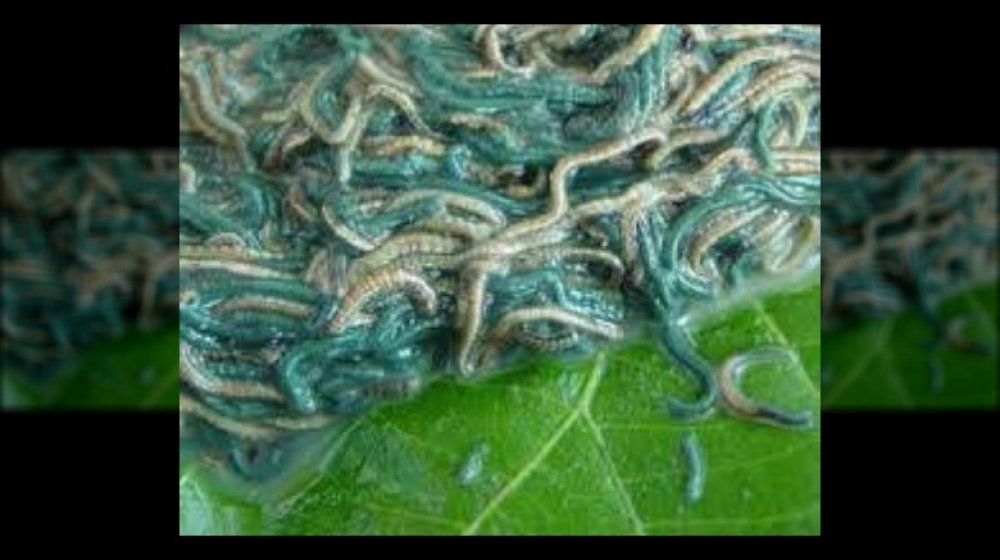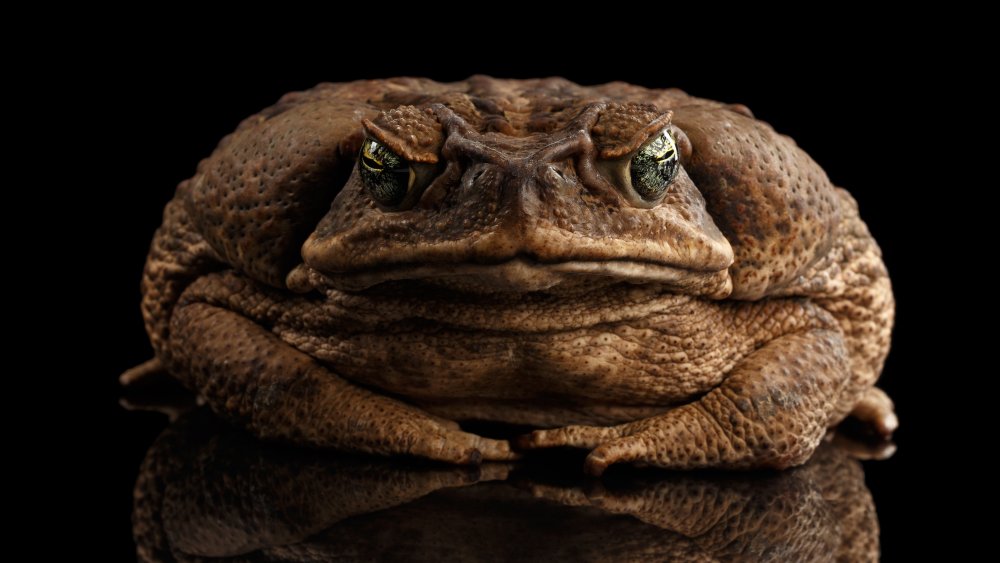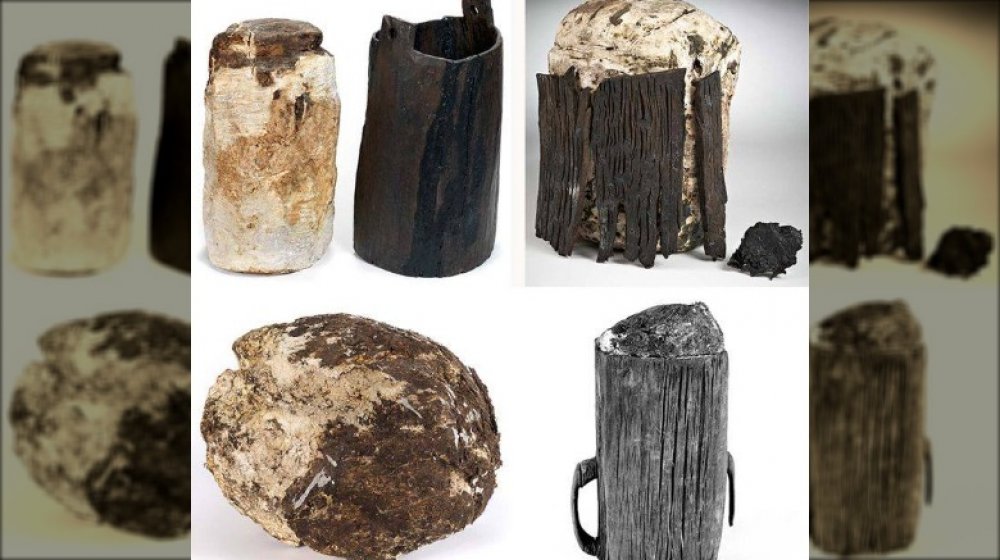The Absolute Worst Things Andrew Zimmern Has Eaten On Bizarre Foods
Bizarre Foods is one of those shows that you just can't seem to look away from... even in the moments where you might want to. Andrew Zimmern has been traveling to the farthest corners of the world, meeting people, and trying some of the strangest foods out there since 2006, and he's been to a lot of places.
Like... a lot.
He's demonstrated some incredible bravery along the way, trying things that make viewers' stomach churn on his behalf. Zimmern's show might be known for the weird cuisine, but he told Thrillist that if he could change the name of the show, he would. He chose "bizarre" because of the second dictionary definition of "unusual and interesting." While he's still telling those kinds of stories and says the show has allowed him to sort of redefine how people think of something that's "bizarre," he would still 100 percent change it to something a little more respectful. Cuisine isn't bizarre to those who are eating it, after all, it's only strange from the outside looking in.
That said, let's take a look at some of the worst things — from an outside viewer's perspective — that Zimmern has ever eaten.
Andrew Zimmern ate enset and kocho in Ethiopia
While many viewers might first think of some of the more questionable bits of an animal when they think of the worst foods Andrew Zimmern has ever eaten on his trips for Bizarre Foods, he told The Washington Post something surprising. One of the worst things, he said, was "as vegan as it gets".
So, what is it? Zimmern had the misfortune to be served this not-so-tasty meal in Ethiopia, where it's pretty common. It comes from a tree that looks like a banana plant and is, in fact, a cousin of the banana... but definitely doesn't taste like a banana. The edible part comes from the enset plant's pseudo-stem, says Atlas Obscura, and once the tree is uprooted, it's ground into a pulp, mixed with yeast, and put into a pit. It's left in the ground to ferment for anywhere between three months and two years, and then it's usually baked into a thin, bread-like round that's high in carbohydrates, used to bulk up meals, and is also used as a utensil.
The bread is called kocho, and Zimmern has said it's, "... one of the most horrific things I've ever consumed." But for the people of Ethiopia, it's invaluable: since it grows year-around, it can be a literal life-saver during famines, and is a staple food for around 15 million people.
Andrew Zimmern ate suri in Peru on Bizarre Foods
They're called suri, and they're also called coconut tree grubs. It might make your skin crawl, but they're still regularly harvested, skewered, and charred in Peru. Don't fancy eating grubs? Andrew Zimmern didn't either; not always, at least.
He summed up the Bizarre Foods experience this way: "These protein-rich grubs taste like crisp rolls of charred chicken skin if they are cooked properly. If not, they taste like pus bags filled with rotted, digested wood."
There you have it. So what, exactly, are they? According to Rain Forest Cruises, they're not just a common street food, they're a local delicacy. They're the larvae of the palm weevil, and if you've ever seen the tree that's the symbol of the Amazonian rain forest — the aguaje tree — you've seen where they're found. The weevil lays its eggs inside the tree, and the larvae eat the tree's bark. (Hence the digested wood texture.) They're said to have the flavor of hazelnuts, the texture of mayo, and medicinal, infection-fighting properties.
They're pretty big, too, up to four inches long. It's estimated that most Peruvians eat about 4.5 pounds of the nutrient-rich grubs each and every year, and in spite of the fact that cooked suri are widely available, plenty of people just pluck them off the tree and eat them raw. That... might actually be worse.
Andrew Zimmern ate hakarl in Iceland on Bizarre Foods
When Food & Wine asked Andrew Zimmern what the worst kinds of food were, he gave an answer many people can agree with: "the fermented spoiled ones." His example was hakarl, an infamous Icelandic food he tried in the second season of "Bizarre Foods."
Everyone's heard of it, but what's the deal with it?
Hakarl is made from the Greenland shark, which is an incredible animal. Oceanwide Expeditions says that when left to their own, they typically live to be around 400 years old, making them the longest-living vertebrate on the planet. They can dive more than 7,000 feet below the surface, tolerate frigid, Arctic waters, reach 21 feet in length, and weigh up to 2,100 pounds. That's a ton of meat, but the fresh flesh of the shark is filled with poisonous neurotoxins.
But Atlas Obscura says it was the Vikings who discovered that fermenting the shark neutralized the toxins, and it's still done today. Different cuts of shark have different tastes and textures, and it's described as being a little cheese-like, it can be fishy, it smells like ammonia, and has an aftertaste that's distinctly urine-y. It's no wonder it's often washed down with a shot of booze, and it's probably safe to say that booze often begins the hakarl-eating experience, too.
In a US episode of Bizarre Foods, Andre Zimmern ate rotten tomato ketchup
Ketchup seems like it would be as inoffensive as you can get, but in 2018, Andrew Zimmern told Fox News that there was a certain kind of ketchup from a Bizarre Foods episode in Missouri that was so bad he had to use a usually-forbidden word to describe it: "disgusting".
"I think it's been a while since I've eaten something that I felt was truly horrific on camera," he told them. "That being said... the rotten tomato ketchup certainly was disgusting, in every sense. And that's a word I never use around food, but ... that's the only way to describe it."
To be more precise, Zimmern went on to say that it was a particular type of condiment used with various types of roasted meats. It's essentially rotten tomatoes, covered with mold. It's then boiled, long enough to kill the bacteria, and he says it turned into a not-so-terrible condiment with a "faint, fermented, off flavor." While it's certain that mold brings along a certain sort of flavor, can meat truly benefit from it? Yay or nay?
Andrew Zimmern ate horse rib and rectum in Kazakhstan
There are some animals that are just off-limits, like cats, dogs, and — according to tens of thousands of Whole Foods petitioners — rabbit. Most people in the U.S. add horse to that list, too; the U.S. was built on the backs of horses, after all, and today, they're still treasured creatures.
But according to Andrew Zimmern, they should be livestock raised to be slaughtered and eaten just like cows. He's been incredibly outspoken about his belief that horse should become regularly consumed (via Taste Terminal), and used the fact that it's normally eaten in places like South Korea and across Central Asia as support for his argument. (Many are less convinced and more outraged by the idea.)
But it was Kazakhstan where he sampled the oddest cut of horse meat for Bizarre Foods, he says. He was in Almaty's Green Bazaar during season six when he had horse sausage. In addition to the fact that it was horse, it was the casing that would give most people pause: horse rectum was used as a natural casing for the rib meat, and the whole thing was dried then smoked.
Andrew Zimmern ate balut for Bizarre Foods in the Philippines
One of the first episodes of Bizarre Foods was one where Andrew Zimmern headed off to the Philippines, and sampled another massively polarizing dish: balut. According to CNN, it's even polarizing in the Philippines, where some students are introduced to the dish as a part of their science classes, then are instructed to eat the semi-developed duck or fail the assignment. Needless to say, that's led to a whole slew of people who won't eat it.
That's a horrible way to spend a science class, and it's more horrible when you know exactly what it is. Balut is a roughly 18-day old duck embryo, usually boiled for about half an hour before it's served still-warm. The liquid part of the egg supposedly tastes a little like chicken broth, the yolk is a bit like pudding, and since the duck is so far along in its development (it's about a week from hatching), you'll have to crunch your way through a beak, feet, and bones.
There's a belief that it's an aphrodisiac, and it's also claimed that it cures a hangover. It's no wonder, then, that it's been a popular late-night snack sold as street food, or, it has traditionally been, at least. The popularity of balut is on the decline, fortunately for mommy and daddy ducks everywhere.
Andrew Zimmern ate jellied moose nose in a US episode of Bizarre Foods
There's something to be said for using every part of an animal, and head far enough to the north and you'll find that animal just might be a moose. Andrew Zimmern headed to Alaska in the first season of Bizarre Foods, and on the menu was jellied moose nose.
And no, that's not an adorable name for some kind of cute confectionary. Moose nose has been considered something of a delicacy among northern communities for a long time, and Atlas Obscura says the Canadian government even encouraged the use of moose nose in a 1960s cookbook filled with ideas on how to survive — creatively — while living in the northern wilderness.
If you want to make your own jellied moose nose, it's not terribly complicated. Peel or skin the nose first, then combine the white and dark meat with onions, garlic, and whatever spices you fancy. Add other face meat if you like, and cook. Put the mixture in a loaf pan, and fill with a gelatin-based broth. Leave it to congeal in the fridge, then cut off a slice or two to serve, just like a meatloaf. Zimmern has said it tastes a bit like corned beef, and the more different types of face meat that get included, the wider variety of textures. We suppose that's good?
Andrew Zimmern ate staked rat, rancid fish, raw calf innards and stomach in Thailand
The Thailand episode of Bizarre Foods was a rough one, with not just one nausea-inducing food, but a whole bunch of them.
It started, Serious Eats says, with Andrew Zimmern passing on a bag of bloody cow placenta and opted instead for a bamboo rat on a stick. It was impaled and grilled, and if you've ever wondered whether or not grilled rat entrails smell good, the answer is apparently "no."
Then, it was on to the dung beetles (which were "nutty") and the giant horned beetle (which tasted like "swamp mud"). The following day included raw meat and fat from a just-killed calf, and even though Zimmern passed on the offering of the animal's stomach contents, he did try liver dipped in a bowl of spices and gall bladder bile.
It wasn't over yet, oh, no. Then, it was on to hunting field rats that were cut up whole for a stir fry (with Zimmern particularly hesitant about the skin and the tail), then, it was time for some carnival food. No candy apples here! Instead, it was fried sparrows and fish meat that had been salted, fermented, then rotted for a few days. If there's any trip he should have packed some granola bars for, it was probably that one.
Andrew Zimmern ate lutefisk on Bizarre foods in Minnesota
Here's the thing about fish: it's all about texture. It can definitely be delicious, firm, and flaky, but lutefisk is none of those things.
Zimmern and "Bizarre Foods" headed to Minnesota in 2007, and sampled lutefisk (in addition to other types of traditional Scandinavian foods, like herring, blood sausage, and fruit soup). Surprisingly, he found it mild and not as bad as he had expected... but still, the texture was described as "off-putting".
And it's a gelatinous texture that comes from the way the fish is prepared. It starts out by being soaked for six days, in cold water that's changed every day. The waterlogged fish is then put in a solution of cold water and lye for a few more days, and yes, it's dangerous as lye can definitely cause chemical burns. It's soaked again for around another six days in plain water, then it's prepped by either being steamed or baked.
It's an oft-told story that lutefisk was once used in an attempt to poison Viking raiders, but they ended up liking it. Fun fact: don't use sterling silver utensils, and it'll ruin the metal. You've been warned.
Andrew Zimmern ate palolo for Bizarre Foods in Samoa
The planet's oceans are amazing places, but they're also filled with some icky creatures. In some places, they eat those creatures.
Andrew Zimmern has said that some of the strangest sea creatures he's ever eaten on Bizarre Foods crawl out of the coral reefs of Samoa, and they're very small worms. They're officially called palolo, and according to Atlas Obscura, they can only be caught on a single night in October. That's when they come out of the coral — seven days after the full moon, it's both mating time and harvesting time. And don't worry, it gets even weirder than the fact that some palolo harvesters will pause to slurp up a worm right out of the ocean.
Palolo have the ability to detach their heads from their tails, so when you get a plate of the delicacy — which is said to have the texture of noodles and the flavor of seaweed or caviar — you're getting a plate of headless worm-bodies. Males are reddish and females are blueish, and while you're eating, their heads are back in their coral homes, busy regrowing tails — a feat they can accomplish in just a few days.
Andrew Zimmern ate cane toads on Bizarre Foods in Australia
In 2009, Andrew Zimmern and Bizarre Foods headed to Australia, and a weird thing happened. Zimmern and the crew headed out into the Northern Territory with FrogWatch, a group dedicated to the extermination of the cane toad. The natives were shocked when, after helping catch the frogs, Zimmern cooked and ate their legs.
That's not as cold-hearted as it sounds, because according to the Australian Museum, cane toads are an extremely poisonous species with no major predators. They were introduced in 1935 to help eliminate scarab beetles, but have become major pests in their own right. They hunt native wildlife, compete with other species for resources, spread disease, and can even injure pets and people.
There have been numerous attempts to find a way to control the population of these hardy toads, and according to Professor Philip Hayward from the Southern Cross University (via ABC), eating them is actually a pretty good idea.
They're nutritious, high in the oft-touted omega 3 fatty acids. They take on the taste of whatever they're marinated in, and eating them is a win-win — it'll help control the population, and could be a valuable food source. Hayward stresses that preparing them correctly takes some study and expertise as they've got a number of poison glands, but aside from that, they're... delicious?
Andrew Zimmern ate 3,000-year-old bog butter in Ireland
Bogs are Ireland's unique wetlands, landscapes made of a high percentage of water, decomposing plant material, and valuable grazing for native breeds. They can store millions of tons of carbon, says the Irish Peatland Conservation Council, and they've also shaped the development of flora, fauna, and people, ancient and modern.
The unique makeup of the bogs means their underground environment is cool, highly acidic, and low in oxygen content — and that, says the University College Dublin, made it the perfect environment for storing perishable foods pre-refrigeration. Every so often, farmers cutting turf in bogs will come across containers of butter, some dating back thousands of years. Samples of bog butter have been dated to as far back to at least 1750 BC, signs that the country's dairy industry has thrived for millennia.
Did Andrew Zimmern get to eat some 3,000-year-old butter on Bizarre Foods? Absolutely. While he described the experience as "magical," the words he used to describe the butter itself were less kind: "a lot of funk" and "a crazy moldy finish." This definitely isn't your grandmammy's KerryGold.
